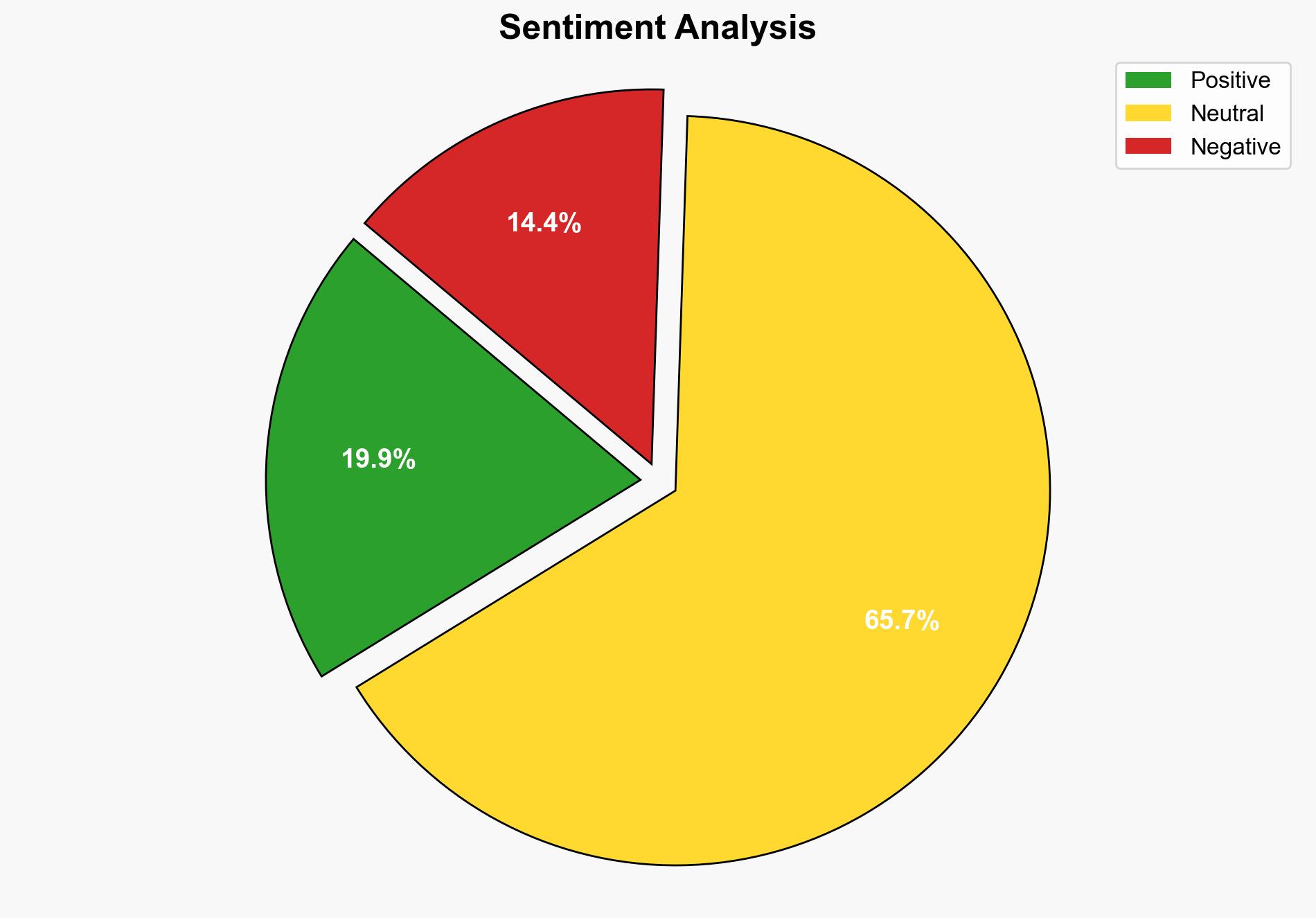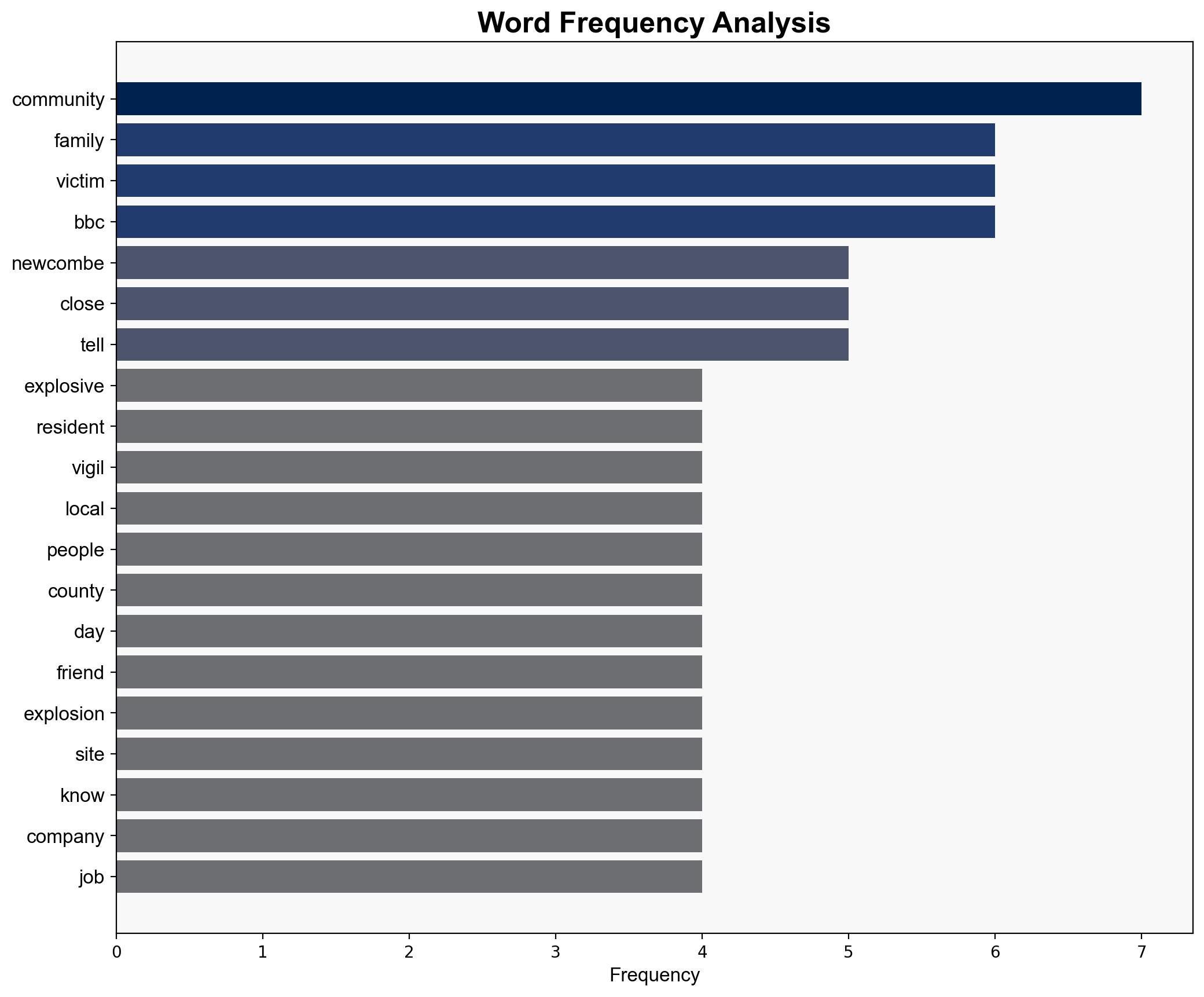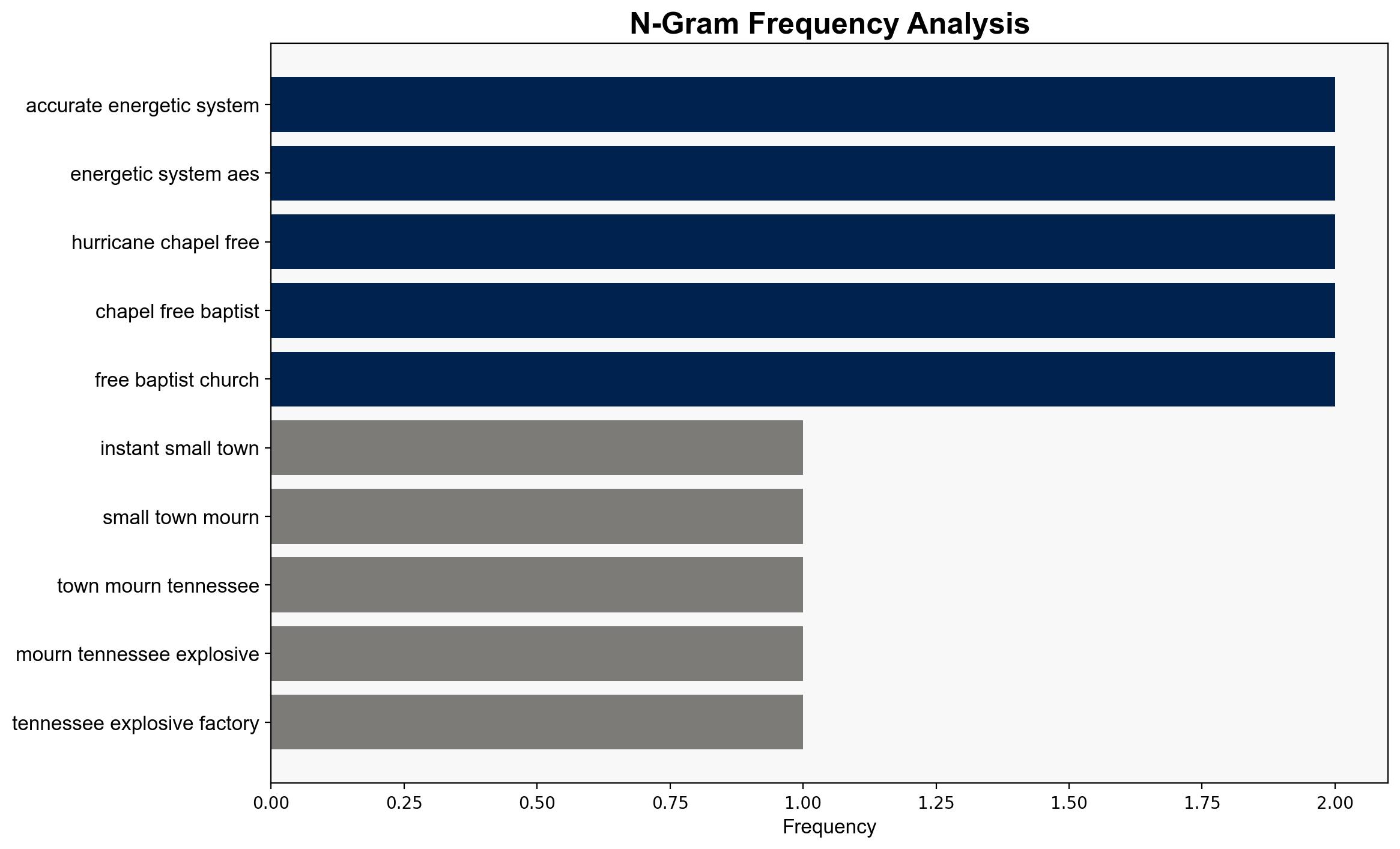‘In an instant they were gone’ – small town mourns after Tennessee explosives factory blast – BBC News
Published on: 2025-10-12
Intelligence Report: ‘In an instant they were gone’ – small town mourns after Tennessee explosives factory blast – BBC News
1. BLUF (Bottom Line Up Front)
The most supported hypothesis is that the explosion at the Tennessee explosives factory was due to an industrial accident, exacerbated by inadequate safety measures. Confidence level is moderate due to ongoing investigations. Recommended action includes enhancing regulatory oversight and safety protocols in similar facilities to prevent future incidents.
2. Competing Hypotheses
1. **Industrial Accident Hypothesis**: The explosion was caused by a failure in safety protocols or equipment malfunction at the Accurate Energetic Systems (AES) factory. This is supported by the factory’s history of safety violations and the nature of the materials handled.
2. **Deliberate Sabotage Hypothesis**: The explosion was the result of intentional sabotage, possibly by a disgruntled employee or external actor. This hypothesis considers the potential for insider threats or external interference, although there is currently less direct evidence supporting this scenario.
3. Key Assumptions and Red Flags
– **Assumptions**: The industrial accident hypothesis assumes that previous safety violations were not adequately addressed, leading to the incident. The sabotage hypothesis assumes the presence of a motive and opportunity for deliberate interference.
– **Red Flags**: The lack of immediate identification of the explosion’s cause raises questions. The rapid shift from rescue to recovery efforts suggests a presumption of no survivors, which might indicate prior knowledge of the site’s conditions.
– **Blind Spots**: Limited information on the internal security measures at AES and the potential for external threats could skew analysis.
4. Implications and Strategic Risks
– **Economic Impact**: The incident may lead to increased scrutiny and regulatory costs for similar facilities, impacting local economies reliant on such industries.
– **Safety and Security**: Highlighting vulnerabilities in handling explosive materials could prompt broader safety reforms.
– **Community Trust**: The tragedy may erode trust in local industry and authorities, necessitating transparent communication and community engagement.
5. Recommendations and Outlook
- Conduct a comprehensive safety audit of AES and similar facilities to identify and rectify potential hazards.
- Enhance security measures to prevent potential sabotage, including employee background checks and surveillance upgrades.
- Scenario Projections:
- Best Case: Implementation of improved safety protocols prevents future incidents, restoring community trust.
- Worst Case: Further incidents occur due to unresolved safety issues, leading to regulatory crackdowns and economic downturns.
- Most Likely: Incremental safety improvements are made, with gradual restoration of community confidence.
6. Key Individuals and Entities
– Jerri Newcombe: Friend of a victim, providing personal insights into the community’s loss.
– Chris Davis: Humphreys County Sheriff, involved in the response and investigation.
– Jason Craft: Hickman County Sheriff, overseeing local law enforcement efforts.
– Brice McCracken: ATF official, leading the investigation into the explosion.
7. Thematic Tags
national security threats, industrial safety, community resilience, regulatory oversight





